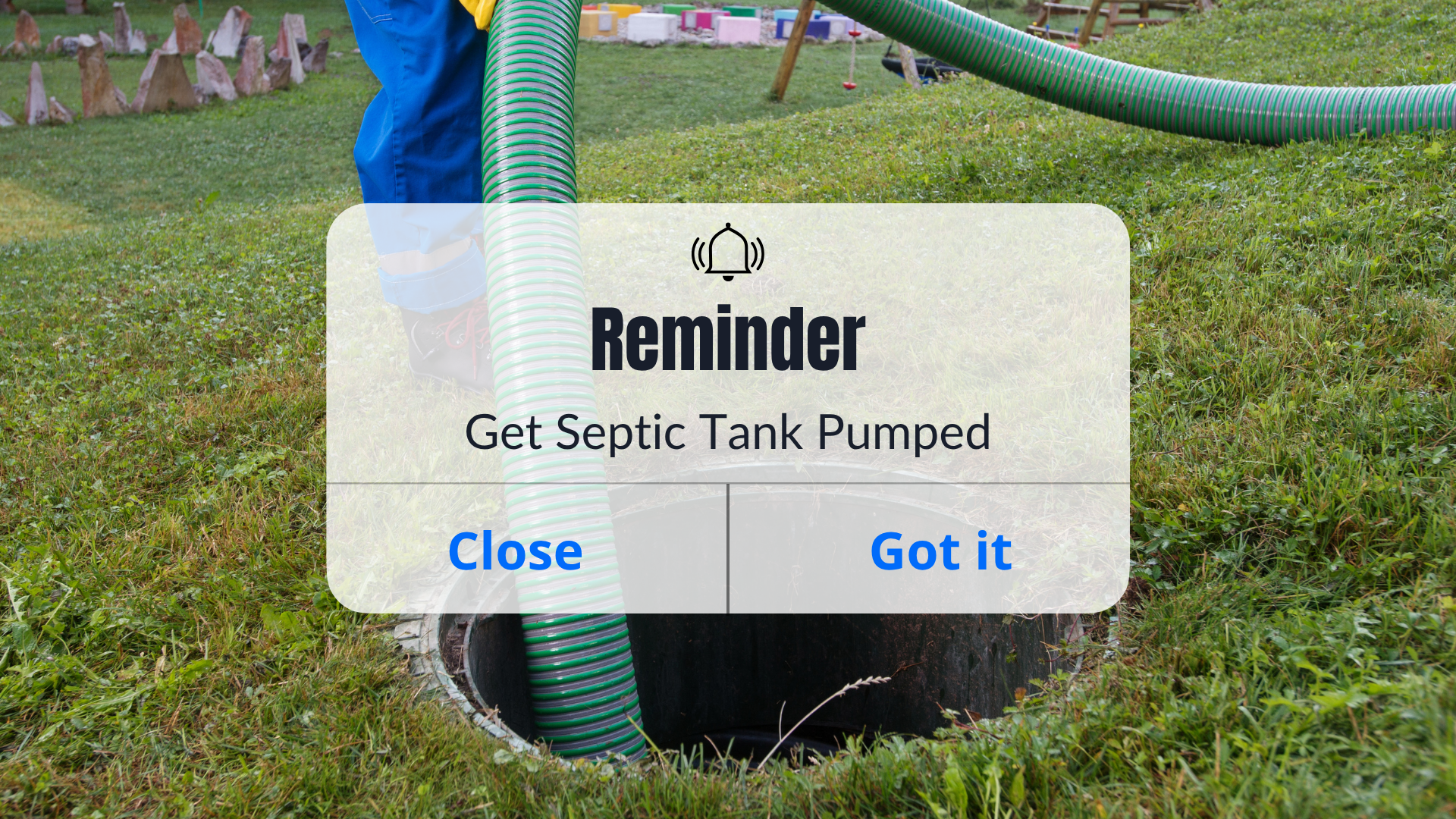Why Septic Companies Lose Customers (And How to Prevent It)
Key Takeaways
- Most septic businesses lose customers due to poor communication, inconsistent service, and lack of follow-up — not price.
- Even a 5% increase in customer retention can boost profits by over 25%.
- Automating reminders, sending job confirmations, and following up post-service drastically improves retention.
- Septic-specific CRM tools help track service history, improve response times, and turn one-time jobs into recurring business.
The Real Reason Septic Companies Lose Customers
Most septic business owners think they lose customers because of price. In reality, it’s usually because the customer didn’t feel taken care of — or worse, they felt ignored.
Here’s the truth: homeowners don’t want to shop around for septic services. They want one company they can trust and call every 3–5 years when it’s time to pump the tank. But that only happens if you stay on their radar and make the process painless.
When customers don’t come back, it’s often because:
- They never received a reminder
- Their technician showed up late (or not at all)
- The invoice was confusing or incomplete
- No one followed up after the service
- The service felt rushed, messy, or unprofessional
Most of these issues come down to one thing: communication. If your business isn’t sending job confirmations, reminders, or follow-ups — or if your team shows up with no context for the job — it creates friction. And friction drives people away.
Customer loyalty isn’t just about doing the job. It’s about making the customer feel like they don’t need to look elsewhere next time. The companies that get this right don’t just earn more money — they spend less chasing new leads.

The Cost of Poor Customer Retention
Losing a customer doesn’t just mean losing one job — it means losing years of future revenue. Septic services are cyclical by nature. A typical residential customer needs their tank pumped every 3 to 5 years, and often calls the same company for inspections, repairs, or emergency service. That’s a long-term relationship — or at least it should be.
According to marketing research, it costs 5 to 7 times more to acquire a new customer than to keep an existing one. And in the septic industry, where lead generation often comes from Google Ads, home service directories, or yard signs, those acquisition costs can stack up fast.
Let’s look at a quick example:
- Average revenue per job: $400
- Customer pumps their tank every 4 years
- Lifetime value over 12 years: $1,200–$1,600 (not including referrals)
- Lose 10 of those customers? You just gave up $12,000+ in future revenue
And that’s assuming they only use you for pumping. Many customers will call for lift station issues, filter cleaning, inspections during home sales, or even recommend you to neighbors. A customer isn’t a transaction — they’re a pipeline of steady income.
Retention also smooths out the feast-or-famine cycle. When you build a reliable base of returning customers, you don’t have to rely so heavily on ads or constant outreach. You get more predictable revenue — and a whole lot less stress.
Bottom line: poor retention quietly kills growth. Strong systems to keep customers coming back are one of the most overlooked — and most profitable — assets a septic business can build.
How to Create a Customer Experience That Builds Loyalty
Customer loyalty doesn’t happen by accident. It’s the result of consistent, professional, and thoughtful service — from the first phone call to the final invoice. Most septic businesses lose repeat customers not because of a bad job, but because the experience around the job felt disorganized or forgettable.
If you want customers to call you again (and refer you to others), every interaction needs to feel intentional.
Here’s how to make that happen:
- Send confirmations as soon as a job is scheduled — people want to know they’re on your calendar.
- Give arrival windows and stick to them. If something changes, send a quick update or text.
- Show up clean and professional. A uniform, a marked truck, and a quick greeting go a long way.
- Leave the site better than you found it. Close gates, tidy up, and check in before leaving.
- Make the invoice clear and easy to pay. Confusing charges or delays in billing create friction.
- Follow up after the job. A quick “thank you” or request for feedback reinforces that you care.
Customers don’t expect perfection. But they do expect reliability, respect for their time and property, and clear communication. If you can deliver that consistently, they’ll never even look at your competitors.
What loyal septic customers expect:
- Clear and prompt communication
- Technicians who show up on time and know the job
- Fair pricing with no surprises
- A company that remembers them and their system
- Easy ways to rebook in the future
If you want long-term customers, stop thinking like a truck operator and start thinking like a service brand. The bar is low in this industry — and that’s your opportunity.
Follow-Up Is the Retention Superpower Most Septic Companies Ignore
Most septic companies finish a job, send the invoice, and move on — never contacting the customer again. That silence costs you money. A simple follow-up process can turn a one-time customer into a repeat customer for life.
Here’s the reality: people forget. Even satisfied customers won’t remember your name 3 years from now unless you remind them. And they won’t go digging for your number when they’re in a rush — they’ll Google someone else.
That’s why follow-up is your secret weapon. It keeps you top of mind and shows professionalism most competitors lack.
Easy ways to build a follow-up system:
- Send service reminders every 2–3 years for residential customers
- Follow up after every job with a thank-you email and a link to leave a review
- Offer to set them up on a recurring maintenance plan
- Send seasonal tips (like “avoid overloading your system during holidays”) to stay relevant
- Text rebooking links a year or two after service to make it effortless for them
You don’t need to do this manually. Septic software like ServiceCore can automate most of it — emails, reminders, even review requests — so you build loyalty on autopilot.
Simple follow-up = more reviews, more repeat jobs, more referrals. It’s one of the easiest wins you’ll ever set up, and most haulers never bother.
The companies that follow up are the ones people remember. The rest just fade out of the picture.

How CRM and Septic Software Keep Customers Coming Back
Keeping track of hundreds of customers, their last service dates, special requests, and upcoming jobs is nearly impossible without a system. That’s where a CRM (Customer Relationship Management) tool — built specifically for septic businesses — becomes a game-changer.
Septic software like ServiceCore doesn’t just help you schedule jobs. It helps you build long-term relationships with customers by storing every detail that matters and automating the touchpoints that drive retention.
Here’s how it works:
- Service history at your fingertips – Know exactly when a tank was last pumped, what issues came up, and what recommendations were made.
- Automated service reminders – Send emails or texts when it’s time for the next pump-out, even if it’s three years later.
- Property-specific notes – Gate codes, dog warnings, buried lids, or anything your techs need to know next time.
- Easy rebooking – Make it simple for customers to request service online without picking up the phone.
- Review and referral automation – Ask for a Google review or referral after a successful job without lifting a finger.
With a CRM, you’re not guessing — you’re remembering. That small shift makes customers feel valued, which keeps them coming back.
Septic customers are loyal if you give them a reason to be. CRM-backed follow-ups, reminders, and smooth communication make it effortless for them to stay with you — and make it harder for them to even consider calling someone else.
Final Thoughts: Stop Losing Customers You Already Earned
You’re already doing the hard part — getting the job in the first place. But if you’re not following up, tracking service history, or reminding customers when it’s time for their next pump-out, you’re leaving money on the table. Worse, you’re opening the door for someone else to take the next job you should have had locked in.
Retention doesn’t require more marketing spend or a bigger team. It just requires better systems.
Here’s the bottom line:
- Most septic companies lose customers because of silence, not poor service.
- Even small changes — like service reminders or review follow-ups — can have a big impact.
- Software like ServiceCore automates the process, so you don’t have to chase it manually.
You don’t need more leads. You need to stop leaking the ones you already paid for.
Want to see how it works in practice? Check out our guide to Septic Business Software and see how the right tools can keep your schedule — and your customer base — full year after year.
Proactive Ways to Build Loyalty and Keep Septic Customers for Life
Retention doesn’t just happen after a job is done — it starts before the customer ever thinks about needing you again. The best septic companies treat every customer like a long-term relationship, not a one-time transaction. That means staying engaged, personalizing the experience, and showing up consistently — even when there’s no active job on the calendar.
| Retention Tactic | Effort | Impact |
|---|---|---|
| Automated service reminders | Low | High |
| Follow-up thank-you + review request | Low | Medium |
| Saving property notes (gates, pets, lids) | Medium | High |
| Sending seasonal septic tips | Low | Medium |
| Anniversary/loyalty emails | Low | Medium |
| Referral rewards program | Medium | High |
Here are practical, proactive ways to build long-term loyalty and stay top-of-mind between service cycles:
1. Save and Use Property-Specific Notes
When your team documents gate codes, dogs on site, tricky access points, or lid locations, and that info is remembered years later — it builds trust. It tells the customer: “We know your property, and we’re prepared.”
Most homeowners don’t expect this level of detail. Delivering it makes you the obvious choice next time.
2. Send Helpful Seasonal Tips (Not Just Promotions)
People tune out companies that only show up when they want money. Instead, send helpful, relevant messages a few times a year — like:
- “How to Avoid Overloading Your Septic During the Holidays”
- “Spring Checklist: Catch Septic Problems Before Rainy Season”
- “What to Know Before Hosting Guests or Parties on Septic”
These types of emails or texts position you as a helpful expert — not just another contractor.
3. Automate Anniversary Check-Ins
Your CRM already knows when a customer last used your services. Use that data to send short, thoughtful check-ins at key intervals, such as:
- 6 months after service: “Hope everything’s working smoothly — let us know if anything’s come up.”
- 1-year anniversary: “Thanks for choosing us last year — we appreciate you.”
- 3-year reminder: “It’s probably time to schedule another pump-out. Here’s an easy link to rebook.”
These simple, automated touchpoints keep your name fresh and build a sense of ongoing relationship.
4. Offer Referral Rewards
Most homeowners don’t think to refer you unless prompted. Make it easy — and worthwhile — by:
- Including a referral message in your post-job thank-you email
- Offering a small reward or discount for every booked referral
- Letting customers know their neighbor also used your service (if appropriate)
Referrals from loyal customers are often your warmest, easiest leads — and they cost nothing to generate.
5. Keep the Experience Personal (Even at Scale)
When customers feel like a number, they don’t come back. But remembering small things — like how they prefer to be contacted or what day of the week works best — builds real connection.
Use your CRM to track:
- Preferred communication method (call, text, email)
- Notes from past conversations
- Special accommodations (elderly parent on-site, work-from-home schedule, etc.)
This kind of context turns routine septic work into a dependable, low-stress experience for the customer — and makes you the no-brainer choice when it’s time for service again.
FAQs
Most customers leave not because of bad service, but because they feel forgotten. No reminders, no follow-ups, and no clear communication after the job makes them look elsewhere next time.
Start by setting up service reminders and follow-up messages after each job. Collect reviews, ask for referrals, and offer maintenance plans. These low-effort steps drive repeat work consistently.
Use software to automate email or text reminders based on the last service date. A quick nudge at the 3-year or 5-year mark keeps you top of mind and boosts rebooking rates.
Yes. Scheduling tools send confirmations and day-of reminders to customers, reducing cancellations and forgotten appointments — while keeping your team on track.
A CRM built for septic companies stores service history, job notes, property access details, and contact info — all in one place. This makes every future job faster and smoother.


